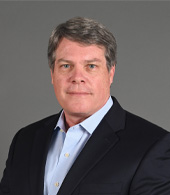Smart Support Underpins IoT Growth: A Q&A with Michael Knight
10/22/2019 //
In this Q&A with Electronics Sourcing North America, Michael Knight, president of TTI Semiconductor Group, tells how the company has enhanced its offering with the acquisition of Symmetry and the creation of a high-tech application engineering support service.
It’s two years since TTI acquired Symmetry. What have been the biggest challenges to date?
Acquiring Symmetry was the start of the TTI Semiconductor Group and as such it blazed a new path within the TTI family of companies. Symmetry’s path into the mix has been very smooth. Its first full year as a TTI company saw sales grow more than 50 per cent.
What challenges there are have been associated with fast growth, namely, attracting additional talented team members, especially in the area of technical sales, and navigating rapidly evolving technology in the wireless IoT space.
Has Symmetry altered in any way to fall under the TTI umbrella?
By design, the company is standalone from the other TTI companies and as such has not changed its focus, controls or business processes. There is growing collaboration with other TTI companies, TTI and Mouser in particular, where customer application and component supply chain needs suggest that we can bring increased value to the customer through intercompany coordination.
What developments or changes have you imposed over the last two years?
The biggest change has been leaving profits in the business to nourish growth, plus forward investing in additional people and inventory. These are the key ingredients upon which a distributor is built.
Since the acquisition, inventory has increased almost five-fold, reaching a point where more space was needed. This led to our carving out a place for Symmetry in a TTI warehouse in Texas, and the transference of all stock to that space in mid-2018. The Symmetry inventory remains in their complete control but now resides in a warehouse that is a free trade zone, ITAR and DFAR compliant, with cross-trained non-Symmetry warehouse workers on hand that can jump in and help during peak activity.
Have you added any new franchises during this period?
The line card as acquired was perfect for Symmetry’s core wireless and video focus and as such there was no fine tuning involved. Where some additions were made, and are to be made, are in component areas that are synergistic to the internet of things stack, namely, sensors, antennas, batteries and cloud connectivity.
The goal is to be a total solution provider for any company working on making their end product “smarter.” Smarter means more capable of gathering and using data and connected to the internet. This happens to describe a great many of TTI’s customers, hence the excellent opportunity for collaboration.
Have you introduced any new or updated services at Symmetry?
Symmetry is just launching a new way of providing application engineering support that is more time effective for customers and cost effective for the business. This Virtual Application Engineering service equips Symmetry application engineers with high end video and audio streaming equipment so they can interact on-demand with a customer engineer.
The connection set-up is quick and can be done through Wi-Fi or even a mobile phone hotspot. The video and audio are crisp and clear, and once a project is started, the customer engineer can plug in with the Symmetry VAE on an ad hoc basis using the camera and microphone in their computer or mobile phone. With this system, a VAE can review circuit designs, firmware, and even assemblies, make notes and annotate as if on a whiteboard, demonstrate devices on equipment in their lab, and pull up and share documents.
VAE 1.0 isn’t fancy, but it is effective. Using the latest software, web services and portable video conferencing equipment, we are able to replicate an in-person meeting between application and customer engineers. As things like virtual reality and smart glasses mainstream, subsequent versions will incorporate those technologies to make the interactions even more life-like. In this way, Symmetry VAE’s can deliver on-demand support that isn’t dependent on travel time. Trials conducted with customers were extremely positive and other companies in the TTI semiconductor group will likely follow suit.
Do you tap into TTI, Mouser or Sager inventories, or is Symmetry inventory separate?
Symmetry suppliers mostly also work with Mouser, but with only one or two exceptions, they are not found on TTI or Sager’s line cards. Where we do have franchise commonality, it is easy to provide inventory assistance as needed between companies, but this is a rare occurrence as TTI companies don’t skimp on stocking behind their customers. This means that they rarely find themselves short of parts.
Where do you see the biggest growth for semiconductors in North America?
Last year, North America semiconductor growth was widespread and obvious. This year, forecasts for market value have gotten negative as the months have ticked by but much of that is related to the dramatic fall in memory pricing. Many segments will finish 2019 with year on year growth on a unit basis.
In fact, I see near- and long-term growth for the semiconductor market driven by the growth of electronic content in literally everything. This is especially true for developing end-market applications like 5G communications, the electrification of transportation and green energy production, and for general purpose technology applications like internet of things. To fully appreciate how rapid and pervasive electronics deployment is, one only needs to note that both Pampers and Huggies have recently launched sensor and Bluetooth enabled diapers for infants.
This interview originally appeared in the October 2019 issue of Electronics Sourcing North America and is used with permission.
Michael Knight

Michael Knight is President of TTI Semiconductor Group and Senior Vice President of Corporate Business Development for TTI, Inc. He has over 25 years of experience in the electronics field and is noted for his knowledge of worldwide industry trends and challenges.